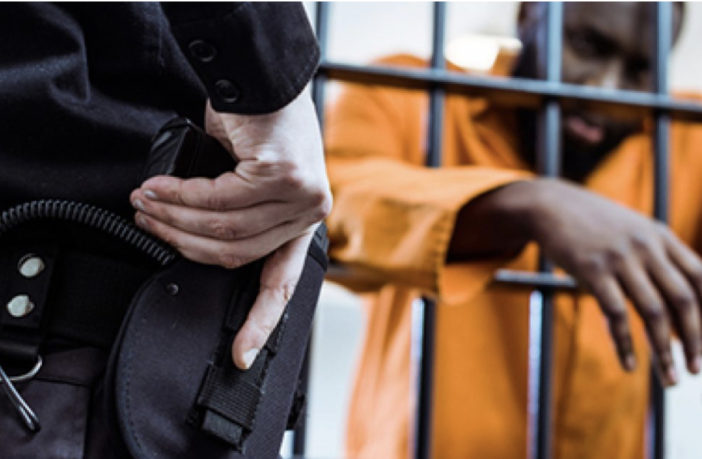In June 2021, the U.S. Department of Justice revealed that as of 2018, inmates reported a 15% increase of sexual victimization from 2015. Of the 27,826 allegations, 55% allegedly occurred at the hands of prison staff.
Today, managers in at least four prisons failed to apply federal law intended to detect and reduce sexual assault.
The Metropolitan Correctional Center in New York, the Federal Correctional Complex Coleman in Florida, Metropolitan Detention Center Brooklyn, and Federal Correctional Institution Dublin, in California, were identified as sites where employees could target female inmates without fear of discipline.
Further, officials said hundreds of abuse charges remain among a backlog of 8,000 internal affairs misconducts that haven’t been investigated.
A new Senate subcommittee investigation has revealed more than 5,400 allegations of sexual abuse against prison employees over the past 10 years.
Released by the Senate Permanent Subcommittee on Investigations, the report revealed the inhumane treatment of female prisoners.
It detailed the response – or lack of – by federal officials who are supposed to watch over them.
The bipartisan investigation found that male Bureau of Prisons (BOP) employees sexually abused female prisoners in at least two-thirds of the facilities that held them over the last decade.
Investigators detailed “horrific abuse” that went on, in some cases, for years.
Wardens, corrections officers and even prison chaplains were among those abusing women inmates, investigators found.
“From corruption at the U.S. Penitentiary Atlanta in Georgia, to the Department of Justice’s failure to count almost 1,000 deaths in custody across the country, to abusive and unnecessary gynecological procedures performed on women in Department of Homeland Security custody,” Georgia Democratic Sen. Jon Ossoff explained.
Ossoff, who chairs the subcommittee, noted that a hearing this month counted as part of a two-year bipartisan effort to investigate conditions of incarceration and detention in the United States.
“It is important to acknowledge that law enforcement professionals working in our prisons have among the hardest jobs in our country, and I believe the vast majority of BOP employees share our goals of ending sexual abuse once and for all in Federal prisons,” Ossoff said.
The problems in federal lockups run deep.
A jury found Ray Garcia, the former warden at Dublin, guilty of seven charges of sexual abuse this month after prosecutors charged him with assaulting female inmates and forcing them to pose for nude photographs.
At least 17 current or former employees at Dublin were under investigation for sexual abuse, including the prison’s former pastor.
“Having experienced the jarring sexual abuse, I came to learn that officer-on-inmate sexual abuse is a pervasive issue throughout the BOP system, though rarely acknowledged in public,” victim Carolyn Richardson stated.
“I have learned that there are challenges in the criminal prosecution of the abusers, especially because officers often do not use overt threats or physical force to obtain sex with inmates, but rather a psychological manipulation and the inherent power dynamic as in my case.”
Brenda V. Smith, a law professor at the American University’s Washington College of Law, said women in every penal system in the United States, including the federal system, have experienced unequal services and opportunities and physical and sexual abuse.
Smith directs the Washington College of Law Community Economic and Equity Development Law Clinic and serves as Director of the Project on Addressing Prison Rape.
She had long worked to help District of Columbia women sentenced in federal prisons around the nation.
“District of Columbia women prisoners were forced to trade sex in exchange for food, work opportunities, visitation, preparation of reports and recommendations to the court detailing their progress,” Smith told the Senate committee.
She added that women also challenged their lack of privacy, including cross-gender searches and viewing by male officers often while they were unclothed or showering.
“There are common elements of vulnerability in each of these women prisoner’s victimization. First, these women, as you know, often bring multiple well-known vulnerabilities into the correctional setting – past histories of childhood and adult physical and sexual abuse; poverty; involvement with powerful systemic actors like courts, child protection, housing, and immigration authorities that control their existence and their families’ existence; fear and deprivation that is part of the custodial experience,” Smith asserted.
“I could name many more elements, as could you. These factors create the levers of pressure that correctional staff can employ to ensure compliance with both legitimate and illegitimate requests.”
She added that the clearly unequal power dynamic plays a major role between women who are incarcerated and male authority figures.
“Combine these levers with a toxic culture, the forced compliance that is a part of the custodial environment, and powerful system actors who appear to be all-powerful and above rules, regulations and indeed the law, women make a choice to survive even if survival means rape.”
DOJ officials said they are in the process of overhauling policies that could allow for the compassionate release of inmate victims of prison employee sex abuse.
Ossoff said the subcommittee investigated sexual abuse of women in federal prison “because of some of their unique considerations.”
“Some women are more likely than male prisoners to have suffered from trauma and sexual abuse prior to incarceration, and particularly susceptible to subsequent abuse in a custodial setting,” the senator explained.
He also noted the subcommittee’s understanding that sexual abuse does not just affect women.
“However, the subcommittee fully acknowledges that sexual abuse is not limited to female prisoners,” Ossoff said.



